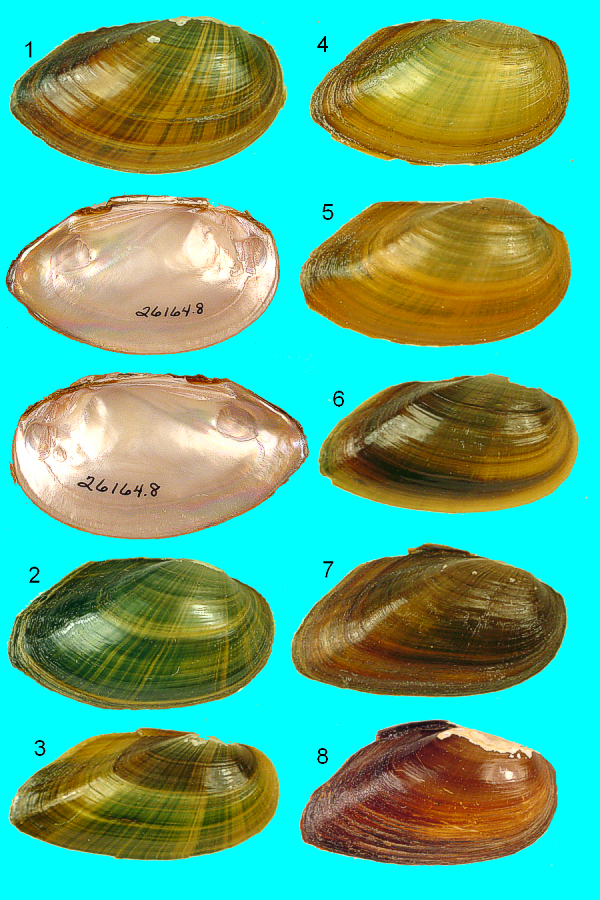Elliptio buckleyi (Lea, 1843)

1. Lake Amoret, Polk Co., FL - 58 mm
2. Myakka River, Sarasota Co., FL - 43 mm
3. Brook at SE edge of Mt Dora, Lake Co., FL - 40 mm
4. Lake Gertrude, Lake Co., FL - 41 mm
5. Lake Aurora, Polk Co., FL - 44 mm
6. Lake Dora, Lake Co., FL - 48 mm
7. Caloosahatchee River, Glades Co., FL - 41 mm
8. Lake Rochelle, Polk Co., FL - 57 mm
Type locality: Lake George and Lake Monroe, Florida.
Range: Peninsular Florida from the St. Johns River south to Lake Okeechobee and Lake Osbourne.
Remarks: A highly variable species. There are two forms of this species that appear distinct if only a limited number of samples are examined. There is a dark, thick morph with the umbo far forward and a pronounced dorsal ridge. By contrast there is a polished, thinner morph with more central umbos and a less pronounced ridge -- this morph is often brightly rayed. The former was given the names Unio cunninghami Wright, 1883, and Unio tenuisculus Frierson, 1911. But Lea's Unio buckleyi is a large eroded specimen of this morph from the northern part of the range and is the earliest name for this species. The polished morph has recieved several names as well: fryanus, orcuttii, and dorei, all Wright, 1888, and hartii and sanctorumjohanium(!), both Wright, 1933.
After examining 127 lots of nearly 1,200 specimens it is clear that these two morphs intergrade completely with each other. In addition, the two morphs are not sympatric. The dark morph tends to occur in the larger lakes and impounded portions of large rivers: Lake Okeechobee, Tiger Lake, Lake Monroe, etc. The polished, rayed morph is common in the numerous small lakes and small rivers scattered throughout central Florida. Specimens from the Myakka River are particularly beautiful.
While there are distinct populations within the range, and every lake and pothole has its own unique form, there is no reason to give these local variants taxonomic status.
Up
Return to Bivalves
Go home
